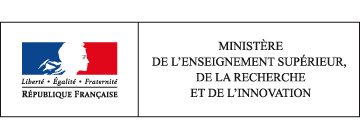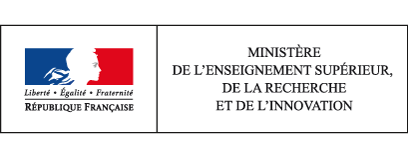27 gross domestic expenditure on research and development
This page has been updated. Read 27. gross domestic expenditure on research and development in Higher education & research in France, facts and figures 10th edition - June 2017
In 2012, half of intramural business enterprise expenditure on R&D (BERD) was focused on six of the 32 industrial branches that benefit from R&D (‘Manufacture of motor vehicles’, ‘Manufacture of air and spacecraft and related machinery’, ‘Manufacture of basic pharmaceutical products and pharmaceutical preparations’, ‘Computer-related and information service activities’, ‘Professional, scientific and technical activities’ and ‘Manufacture of chemicals and chemical products’). In the public sector, dedicated research institutions (EPST and EPIC) carried out 55% of all R&D funded by intramural government expenditure on R&D (GOVERD).
In 2012, BERD totalled €30.1 billion, while GOVERD was €16.5 billion. The increase in gross domestic expenditure on R&D (GERD) in comparison with 2011 was due in large part to increased business expenditure (3.0% in real terms), while government expenditure remained stable (0.1% in real terms) (table 27.01). In 2013, this growth in GERD is expected to slow (0.5% in real terms) due to a smaller increase in BERD (0.8%) and a virtual stagnation in GOVERD (0.1%).
The breakdown of BERD among the main fields of research reveals a marked concentration (table 27.02). Six of the 32 research areas receive half of France’s R&D resources: ‘manufacture of motor vehicles’ (15% of BERD); ‘manufacture of air and spacecraft and related machinery’ (11%); ‘manufacture of basic pharmaceutical products and pharmaceutical preparations’ (10%); ‘computer-related and information service activities’ (7%); ‘professional, scientific and technical activities’ (6%); and ‘manufacture of chemicals and chemical products’ (5%). In the space of around ten years, the ‘manufacture of motor vehicles’ field has become more dominant, primarily to the detriment of ‘manufacture of air and spacecraft and related machinery’ (which was France’s main R&D field up until 1997). Taken as a whole, research fields within the service sector received 20% of BERD (€6.1 billion). In the past 3 years, R&D expenditure in research fields within the service sector has shown significant growth, increasing by 11.7% a year on average in real terms, in comparison with a fall of 1.5% a year in real terms in industrial R&D expenditure.
In 2012, 65% of businesses in France carried out R&D, placing France ahead of the United Kingdom (63%) but far behind South Korea (78%), Japan (77%), the United States (70%) and Germany (68%) (chart 27.03). However, it should be noted when making comparisons with other countries that R&D by French businesses does not cover the country’s entire technological and industrial field. A considerable proportion of high-level technological R&D is carried out by dedicated state research institutions and foundations.
Public research is carried out by dedicated research institutions (accounting for 55% of GOVERD in 2012), higher education institutions (40%), the private non-profit sector (4%) and government departments and other state institutions (1%) (chart 27.04). In 2012, state-owned scientific and technological establishments (établissements publics à caractère scientifique et technologique – EPST) carried out 32% of GOVERD-funded R&D. They varied widely in size, from the multidisciplinary National Centre for Scientific Research (Centre national de la recherche scientifique – CNRS), which conducted 19% of GOVERD-funded R&D, to the French National Institute for Agricultural Research (Institut national de la recherche agronomique – INRA) and the French National Institute of Health and Medical Research (Institut national de la santé et de la recherche médicale – INSERM), both of which accounted for 5% of GOVERD. State-owned industrial and commercial establishments (établissements publics à caractère industriel et commercial – EPIC) were responsible for 23% of GOVERD-funded R&D. R&D was also highly concentrated among EPICs, with 14% of GOVERD going to the civil division of the French Alternative Energies and Atomic Energy Commission (Commissariat à l’énergie atomique et aux énergies alternatives – CEA) and 3% to the French Government Space Agency (Centre national d’études spatiales – CNES), with the remaining EPICs accounting for 5% of GOVERD. Between 2011 and 2012, GERD fell in real terms among EPICs (-5.7%). However, R&D expenditure increased in real terms in the not-for-profit (+ 10.3%) and higher education (+ 2.6%) sectors, as well as, to a lesser extent, among EPSTs (+ 0.8%).
MENESR-DGESIP/DGRI-SIES.
How to cite this paper :
close
Key figures
Whole of France
Whole of France
Whole of France
Whole of France
Whole of France
Whole of France
Whole of France
Whole of France
Whole of France
Whole of France
Whole of France
Whole of France
Whole of France
Whole of France
Whole of France
Whole of France
Whole of France
Whole of France
Whole of France
Whole of France
Whole of France
Whole of France
Whole of France
Whole of France
Whole of France
Whole of France
Whole of France
Whole of France
Whole of France
Whole of France
Whole of France
research branch
Whole of France
research branch
Whole of France
research branch
Whole of France
research branch
Whole of France
research branch
Whole of France
research branch
Whole of France
research branch
Whole of France
research branch
Whole of France
research branch
Whole of France
research branch
Whole of France
research branch
Whole of France
research branch
Whole of France
27.01 Performance of R&D in France by businesses and the public sector
Break in series in 2010 due to changes in how government R&D expenditure was assessed. The R&D expenditure of government departments and certain dedicated state research institutions was assessed using a new method that made it possible to distinguish their funding activities more effectively. This resulted in the 2009 figure for GERD being revised downwards by around €1 billion.
Since 2006, businesses with more than 0.1 FTE researcher have been included.
1 Evaluated on the basis of the price change for GDP as revised in 2014 (base year = 2010).
2 Government, higher education and the public non-profit sector.
3 2009 figures recalculated to make them comparable with 2010.
4 Change of methodology.
5 Final results.
6 Semi-finalised results.
7 Estimates.
You can embed this table to your website or your blog by copying the HTML code and pasting it into the source code of your website / blog:
close
27.02 Breakdown of BERD by branch using the research in 2012
1 Since 2008, the branches that benefit from R&D have been defined using the second edition of the French classification of activities (Nomenclature d’activités française – NAF Rev. 2).
You can embed this table to your website or your blog by copying the HTML code and pasting it into the source code of your website / blog:
close
27.03 Proportion of GERD implemented by businesses and governments in the OECD in 2012 (%)
1 Government, higher education and the private-non-profit sector.
2 Excluding (all or most) defence.
3 Excluding (all or part of) capital expenditure and 2009 data.
You can embed this chart to your website or your blog by copying the HTML code and pasting it into the source code of your website / blog:
close
27.04 Gross domestic expenditure on R&D by institutions carrying out public research in 2012 (in €M)
You can embed this chart to your website or your blog by copying the HTML code and pasting it into the source code of your website / blog:
close
Related statistical publications
 Note flash SIES 01 - Intramural business enterprise R&D expenditure up 1.9% in 2013 - Florian Lezec, Anna Testas - March 2015
Note flash SIES 01 - Intramural business enterprise R&D expenditure up 1.9% in 2013 - Florian Lezec, Anna Testas - March 2015 

 Note flash SIES 01 - Intramural business enterprise R&D expenditure up by 2.7% in 2012 - Collectif - March 2014
Note flash SIES 01 - Intramural business enterprise R&D expenditure up by 2.7% in 2012 - Collectif - March 2014 
 Note d'information SIES 13.08 - Foreign business enterprises account for one fifth of private R&D in France - Nicolas Le Ru - October 2013
Note d'information SIES 13.08 - Foreign business enterprises account for one fifth of private R&D in France - Nicolas Le Ru - October 2013 Foreign business enterprises employ 46,700 full-time equivalent staff in France for these R&D activities. Their research teams tend to be less concentrated in the Île-de-France region than the research teams of French firms. The research intensity of French business enterprises in France seems high compared with that of German companies in Germany or British companies in the United Kingdom. This is not the case of the research intensity of foreign business enterprises: worldwide, they are less committed to R&D.

 Note d'information SIES 13.06 - Research and development expenditure in France in 2011 - First estimates for 2012 - Caroline Iannone, Nicolas Le Ru - July 2013
Note d'information SIES 13.06 - Research and development expenditure in France in 2011 - First estimates for 2012 - Caroline Iannone, Nicolas Le Ru - July 2013 
 Note d'information SIES 12.09 - Shortfall in research intensity in French firms? Comparing France and Germany - Nicolas Le Ru - July 2012
Note d'information SIES 12.09 - Shortfall in research intensity in French firms? Comparing France and Germany - Nicolas Le Ru - July 2012 Translation
 Etat de l'enseignement supérieur et de la rechercheL'état de l'Enseignement supérieur et de la Recherche en France n°8 - juin 2015
Etat de l'enseignement supérieur et de la rechercheL'état de l'Enseignement supérieur et de la Recherche en France n°8 - juin 201527 - les dépenses intérieures de recherche et développement - Catherine David






